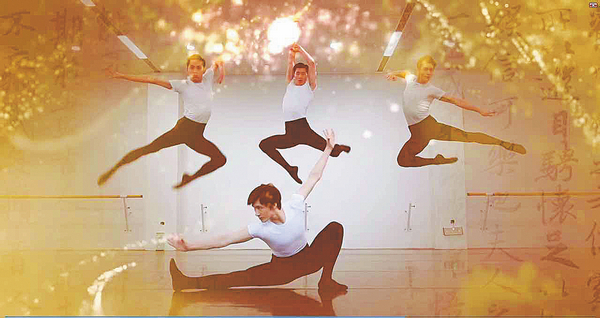Opera house creates historic show inspired by Lantingji Xu
By ZHANG KUN | China Daily | Updated: 2022-12-16 07:29

A dance theater production about Lantingji Xu, the Chinese calligraphy piece, is now in the making at the Shanghai Opera House.
The production, titled In the Ninth Year in the Emperor Yonghe, is expected to premiere next year in November.
The Shanghai Opera House is working with leading dancers from its dance group such as Song Jie, Yang Jingjing, Tan Yimei and Song Yu for this production.
"We hope to present the creation, inheritance and legends of Lantingji Xu through classical Chinese dance with elements of modern dance," says Wang Yabin, the choreographer of the show. "Tracing the story of this calligraphy piece through the centuries, we want to build new connections with contemporary aesthetics and resonate with audiences today."
The show will be the first full-length dance theater performance about the iconic calligraphy piece. Although there have been several short dance performances inspired by the calligraphy piece in the past few years, a full-length dance theater production has never been done before.
According to Wang, calligraphy is very well-suited for dance theater expression as the flow of each stroke, the layout of the characters, the aesthetics, the rhythm and the "breath", or the flow of chi, in calligraphy shares many similarities with dance movements.
"Lantingji Xu is a brilliant gem in ancient Chinese literature. It encapsulates the spiritual, aesthetic pursuit and philosophical ideas of the period," says Zhao Lei, Party secretary of the Shanghai Opera House.
"As such, we hope to present and advocate the beauty of traditional Chinese culture through innovative and dynamic artistic expressions in this new dance theater production."
Similar Chinese dance theater productions, including Poetic Dance: The Journey of a Legendary Landscape Painting, which was inspired by the ancient Chinese painting scroll A Panorama of Rivers and Mountains, have achieved critical success in recent times.
Composed by Wang Xizhi (303-361), Lantingji Xu, or Preface to the Poems Collected from the Orchid Pavilion, consists of 324 Chinese characters in 28 columns and documents a literati gathering by a creek in today's Shaoxing of Zhejiang province in the springtime of the year 353, or the ninth year in the reign of Emperor Yonghe of the Jin Dynasty (265-420).
Forty-two people had gathered along the riverbank for a party, during which cups of wine were floated to the revelers downstream. Each time a cup stopped in front of a person, he had to either compose a poem, or drink the wine. By the end of the day, 37 poems were created, and Wang, the then governor of the prefecture, improvised a preface for the collection of poems made this day.
The calligraphy was written on silk in a semi-cursive style known as xingshu in Chinese, which could be translated as "running style".
Zhi, a conjunction character, appeared 21 times in the piece, with each written in a unique way.
Lantingji Xu was hence widely known in China as "the No 1 running-style calligraphy piece on earth".
Aside from the aesthetics of the manuscript, the transcendental sentiments about life and death reflected in the text makes it one of the most celebrated proses of classical literature in China.
Earlier this year, Italian astronaut Samantha Cristoforetti sparked public interest in the prose when she quoted a paragraph from it as she flew over China in the space station. Her quote read: "Looking up, I see the immensity of the cosmos; bowing my head, I look at the multitude of the world. The gaze flies, the heart expands, the job of the senses can reach its peak, and indeed, this is true happiness."
ZHANG KUN in Shanghai
zhangkun@chinadaily.com.cn
























